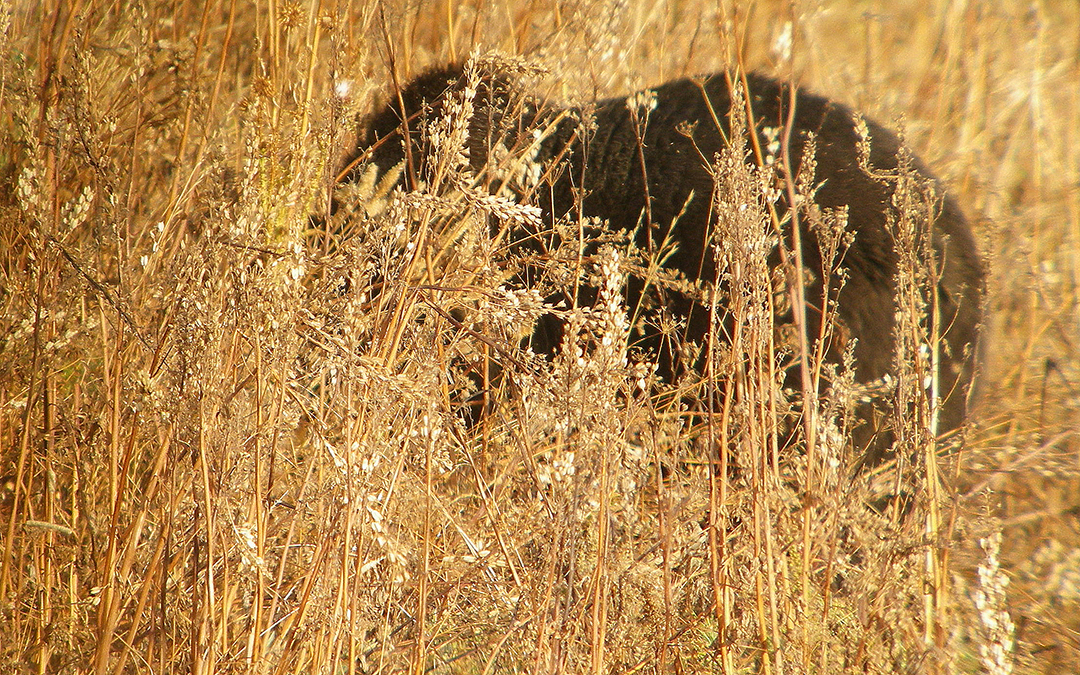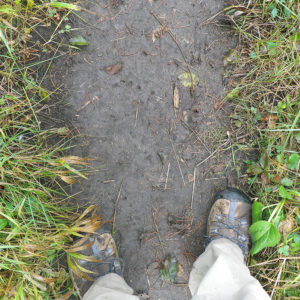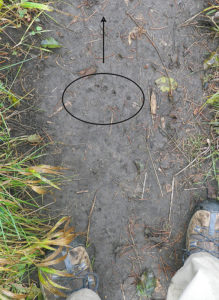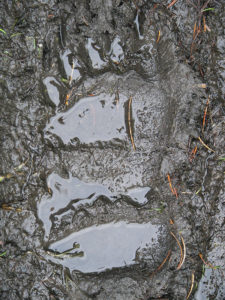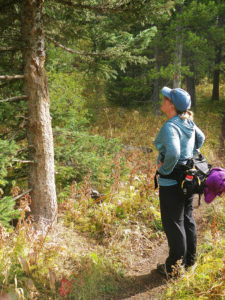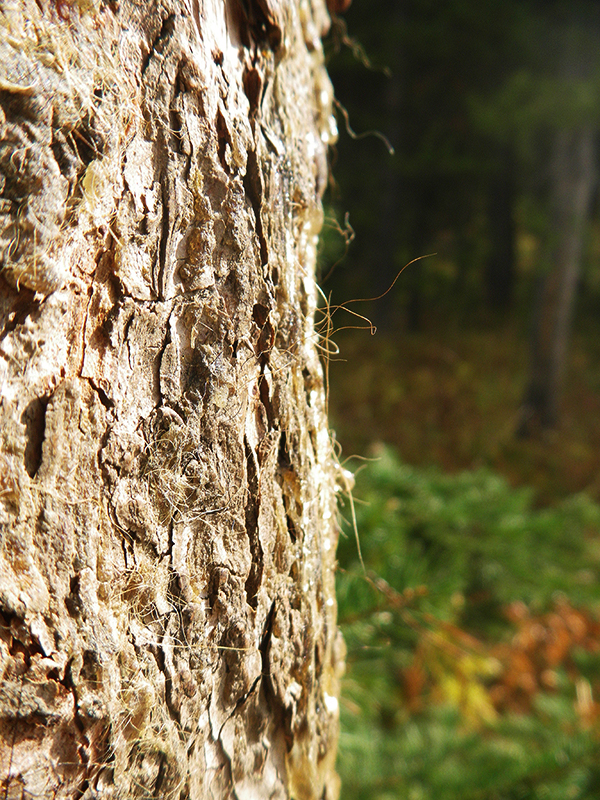“Do you see the grizzly bear? Right there… on the trail… that dark hump in the grass!”
While we rejoice at finding clues and signs of our favorite wildlife (like the grizzly bear) while out and about, the truth is we are seen by wildlife far more than we ever see wildlife. It may be news to many of us, but the natural world talks over, around and ABOUT us all the time. You may think your innocent walk to the mailbox or in the park with your dog is going unnoticed, but in reality you are being watched, personally identified, judged, remembered and ‘ratted on’ far more than you ever think. The voices that speak of our daily activities are not uttered in English or Mandarin or written in ink, rather they are coded in the prattling of a squirrel or the scratches in a bit of exposed earth. The early warning system found in nature lets every bird, deer and bear know you are coming minutes before you ever get there (check out the alarm bells sounded in response to this saw-whet owl near our home for an example). How do we know that those animals are giving us the slip and peering out through the trees and from behind the bushes? The story is in the details, and subtle ones at that!
Look at this bit of hiking trail. Do you see the bear in the picture? Look closely—you will only see the imprints of its claws on this firm ground near my feet. With soft-padded feet, the great grizzly bear may only leave subtle, if any, prints on the trail unless you pick out those innocuous-seeming indentations where its 5 claws poked into the ground. The signs are subtle but they’re there… and knowing which way the bear is going and how recently it passed will help you stay safer and more informed during outings. In the paired image, you can see that I’ve circled the claw impressions and you may notice that they form a shallow arc—it is the outer portion of that arc that points, like a nearly-squished arrowhead, in the direction of the bear’s travel. Knowing when it last rained, when the most recent hikers left their mark, or similar ‘dating events,’ can help you figure out when that bruin, deer or fox passed through, so you can hike easy or know when to be on high alert.
Here’s another subtle gem found in bear country—one you’ve likely hiked past dozens of times never realizing you missed it! It’s a bear ‘rub tree’. Think of these trees as a turnstile like the ones found in the New York subway system; virtually every bear ‘hits it’ as it passes through this area with either a sniff or a scratch of its back. This tree-rubbing behavior represents an arboreal messaging center for the ursine world. A great deal of information is likely shared here; from sex, age, reproductive status, time of last passing, size (on account of how high up the tree certain marks go), to color (as we can see hairs left behind), resident or transient status, and so on. So next time you’re out and about, look for those subtle cues! You may just find evidence of a grizzly bear.

